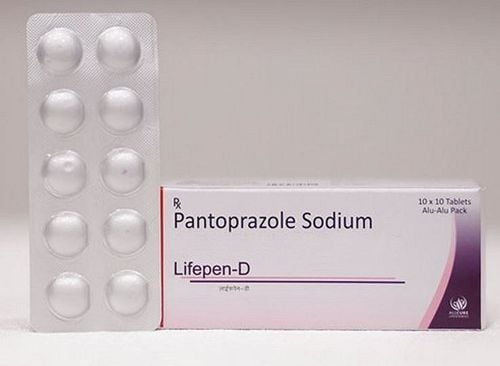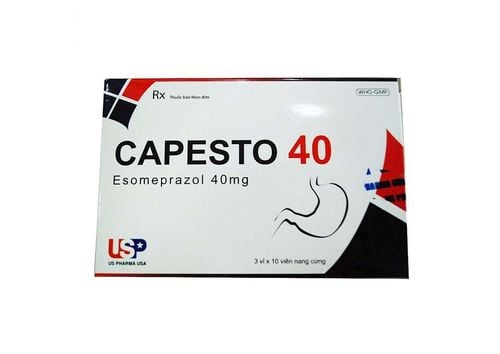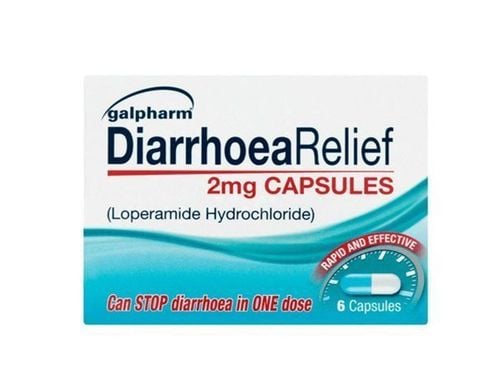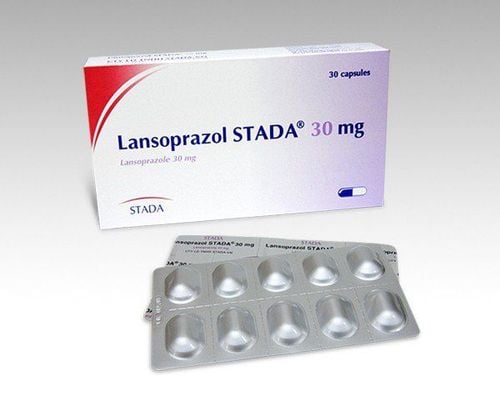This is an automatically translated article.
Posted by Dr. Do Minh Hung - Head of General Surgery Department, Vinmec Central Park International General Hospital.A hernia of the esophageal hiatus is a condition in which the abdominal organs, especially the stomach, are herniated through the esophageal cleft of the diaphragm. This is the cause of the "face sign" causing persistent fatigue for the patient.
1. What is esophageal hiatus?
The diaphragm is a thin, wide muscle that separates your abdomen from your chest and helps you breathe. The esophagus from the thoracic cavity passes through the diaphragmatic slit of the esophagus to the abdomen and connects to the stomach. Normally, the stomach is located below the diaphragm in the abdomen.2. What is hiatal hernia?
A hiatal hernia occurs when the muscle tissue (pillar) around the hiatus esophagitis weakens and the upper part of the stomach (organ) passes through the esophageal hiatus into the thoracic cavity. Most hiatal hernias are asymptomatic and discovered incidentally, rarely a truly life-threatening complication manifests itself.3. Is the disease common?
The disease is more common in Western countries with frequency increasing with age, ranging from 10% in patients < 40 years old, up to 70% in patients > 70 years old, the mechanism probably due to diet. Low fiber leads to chronic constipation and straining during bowel movements.4. What are the symptoms of the disease?
Many people with hiatal hernias have no symptoms. Some people have symptoms similar to those of gastroesophageal reflux disease (GERD). GERD occurs when digestive juices move from the stomach back into the esophagus. Possible Symptoms:Heartburn Bitter or sour taste in the throat Bloating and belching Swallowing Discomfort or pain in the abdomen or chest Although there seems to be a link between hiatal hernia and GERD, however, , many people have hiatal hernia without GERD and people have GERD without hiatal hernia.

Người bệnh thường có triệu chứng ợ nóng. đầy hơi, ợ hơi
5. What is the cause of diaphragmatic hernia?
The exact cause is not clear, but increased intra-abdominal pressure and age-related changes may contribute to the formation of a hiatal hernia.Increased and persistent pressure on the muscle tissue around the esophageal hiatus (the pillar of the hiatal hiatus) can be caused by coughing, vomiting, straining during bowel movements, heavy lifting, or physical stress. Pregnancy, obesity, and severe ascites (excessive intra-abdominal fluid) can also lead to a hiatal hernia.
Other causes such as trauma, orifice of the diaphragm is abnormally large at birth.
6. Who is at risk for diaphragmatic hernia?
The disease can occur at any age and in both sexes, but it is more common in:People over 50 years old. People who are overweight or obese, smoke cigarettes.

Bệnh thường gặp ở người thừa cân, béo phì
7. How many types of hiatal hernia are there?
Hernia hiatus esophagus is divided into 4 types:Type 1: accounted for 95%. This is a sliding hernia in which the cardia of the stomach is herniated up into the thorax. This type is usually a small hernia that causes no symptoms and usually does not require treatment.
Type 2: Occupy rate < 5%. Paraesophageal hernia (roll hernia), in which the cardia remains in its normal position in the abdomen, only the fundus is herniated to the thorax.
Type 3: Mixture of the above two types.
Type 4: Huge hernia, almost the entire stomach is twisted up in the chest, other organs such as colon, spleen can also come up.
Types 3 and 4 are actually type 2 hernias, of which type 3 accounts for 90%, type 4 accounts for 2-5%.
8. What are the complications of the disease?
Sliding hernias (type 1) can cause ulcerative esophagitis, bleeding from the ulcerative esophagitis lesion.Paraesophageal hernias (type 2) tend to get worse over time, sometimes with the entire stomach moving up into the thoracic cavity (type 4).
The risk of dangerous complications is mainly found in types 3 and 4. The stomach and hernia are trapped (trapped), leading to strangulation, torsion, anemia, perforation, and infection with the rate of about 5%.
This complication is potentially fatal, therefore, surgical intervention is necessary. Because of the high mortality associated with this type of hernia, surgical intervention is often chosen whenever a paraesophageal hernia is discovered.
9. How to diagnose diaphragmatic hernia?
A hiatal hernia is often discovered during an examination to determine the cause of heartburn, chest pain, or upper abdominal pain. Tests may include:Contrast X-ray of the esophagus and stomach. Taken in the low lying position, the upper part of the stomach can be clearly seen in the chest cavity. Esophagogastroduodenoscopy Measure pressure in the lumen of the esophagus
10. How to treat diaphragmatic hernia?
Most diaphragmatic hernias cause no symptoms and rarely require treatment. However, because some patients with hiatal hernia have symptoms of GERD, treatment begins with the methods used to manage GERD.11. When does diaphragmatic hernia need surgery?
Surgery is indicated for:Type 1: Severe chronic GERD symptoms that do not improve with medical therapy (drug therapy). Type 2, 3, 4: Must have surgery because of the high risk of complications.
12. How is surgery performed?
Surgery aims to pull the herniated viscera (stomach) back down into the abdomen and remove the hernia sac, reconstruct the esophageal hiatus, and create a valve to prevent reflux of gastric juice into the esophagus. There are many types of anti-reflux, popular methods such as Nissen, Toupet, Dor...If not anti-reflux, chronic gastroesophageal reflux can cause complications such as esophageal ulcers, bleeding blood or scarring of the esophagus. Surgery can be done by open surgery or laparoscopic surgery.
12. How effective is surgery?
Laparoscopic surgery for hiatal hernia and anti-reflux is about 90% effective in most patients. This surgery requires general anesthesia (endotracheal) and usually requires a hospital stay for several days after surgery.After surgery, most patients no longer require long-term treatment with drugs.
13. How to prevent hiatal hernia?

Có thể ngăn ngừa bệnh tiến triển xấu đi bằng cách giảm cân
Losing weight Don't strain to have a bowel movement Don't lift heavy objects Avoid wearing tight pants or belts and some exercises Abdominal exercises Lifestyle changes can help reduce reflux symptoms caused by a hernia. (see article GERD) From September 2019, Vinmec Central Park International General Hospital (HCMC) implemented a new technique – Treatment of hiatal hernia by robotic surgery. ) with hand-held robots.
This method has many advantages compared to both classic laparoscopic surgery and robotic surgery with:
Instruments with surgical heads that act as flexibly as wrist joints to help access narrow angles, increasing the possibility of dissection. separation and less damage to adjacent areas compared with classical laparoscopic surgery; Automated endoscopes via voice, laser, eye tracking, ... help doctors actively control and have better vision and control, increasing accuracy and safety in performing surgery ; With the advantages of compactness, robotic arm surgery is less invasive and has many advantages such as small incisions, less pain, low risk of infection, thereby helping customers to lose less blood during surgery and recover quickly; The cost is much lower than robotic surgery. >>>> Customers can refer to more information: Day surgery, outpatient surgery
Patients will be consulted and treated with experienced endoscopic doctors and directly operated Do Minh Hung - Head of General Surgery Department - Vinmec Central Park General Hospital. Dr. Hung has more than 25 years of experience in the field of General Surgery and has carried out dozens of valuable scientific research works, published many unique surgical techniques, bringing positive treatment effects.
To register for examination and treatment at Vinmec Central Park International General Hospital, please contact Hotline: 0283 6221 166 or register online HERE.













